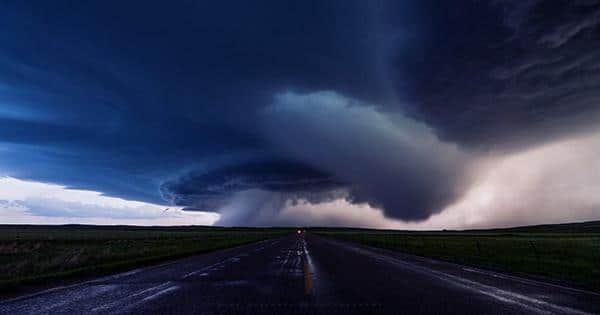In a new study, researchers at the Scripps Institution of the University of California, San Diego and the Khalifa University of Science and Technology in the United Arab Emirates tried to come up with how the so-called “Godzilla” dust came up in 2020.
Remember earlier this year when the biggest Saharan dust cloud of the decade traveled across the Atlantic and headed for America? In an unexpected turn, scientists now suspect that this unusual phenomenon may have been caused by warming the Arctic and sea ice erosion.
Record-breaking Saharan dust clouds traveled through the Saharan air layer, a layer of baking hot and dry air usually formed in late spring and mid-autumn, which peaks in late June to mid-August. As it happens every year, the dust storm of 2020 was a record-breaker. Reaching an altitude of 6,000 meters (19,600 feet), the thickness recorded by the satellite was doubled. The Dust Cloud event hit America after a long journey across the Atlantic Ocean from the Saharan Desert of Africa.
Researchers authored in the journal Geophysical Research Letters argued that the massive dust cloud was a series of patterns of wind blowing over most of the planet that could rotate to reduce the amount of summer Arctic sea-ice.
They argue that the amount of low Arctic sea ice was observed in June 2020, starting with the sequence of events that had a domino effect on wind patterns across many parts of the world. As part of this series of events, high pressure and strong winds from the Arctic descended farther than normal in a clockwise direction, resulting in the development of a kind of high-pressure system (a colonial high) off the coast of West Africa. With the depression at the bottom of this region, an intense north-south pressure gradient hung over West Africa, creating a temptingly strong and endless northeast wind around the Sahara. They say it caused an extremely strong northeast over the Sahara that dusted for four days before crossing the Atlantic.
“As the Arctic sea-ice cover was low in June 2020, it was the lowest on record during satellite observation, which could contribute to the large-scale catastrophic pattern observed,” the study concluded. “So, if these types of patterns become more common in a warm world, it is commendable that the frequency of these extreme dust mites will increase further in the future.
This new hypothesis challenges some existing ideas about how dust clouds affect hurricanes. There is strong evidence to suggest that land dust above the Atlantic can reduce the number of tropical cyclones through cooling encouraged by sea surface temperature dust. However, despite seeing high levels of dust this summer, this year’s Atlantic hurricane season was the most active on record.
“2020 is just a year where everything is reversed,” said Amato Evan, author of the Scraps study and an atmospheric scientist, in a statement.
















